#Stradalli boost
Explore tagged Tumblr posts
Text
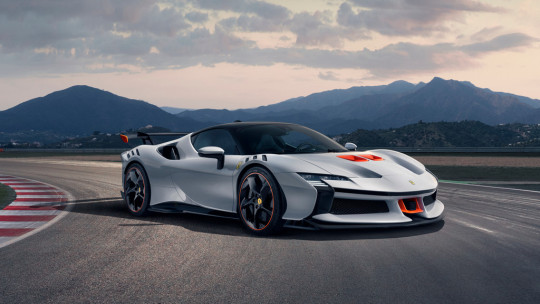


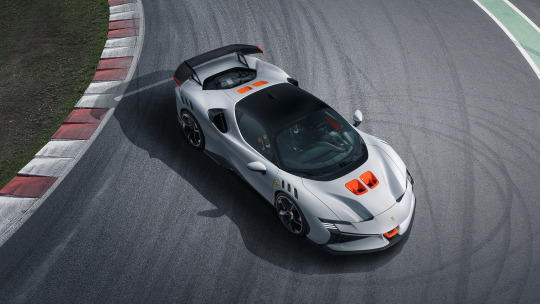
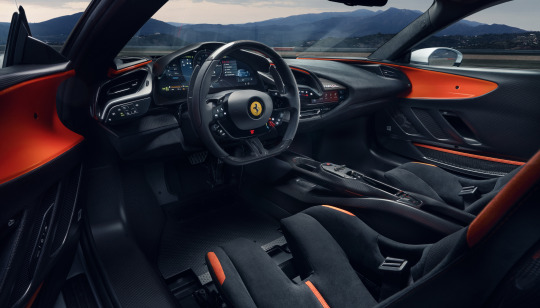

First Look: The Ferrari SF90 XX Stradale
Based on the SF90 Stradale, the new special limited series SF90 XX Stradale was unveiled today alongside its SF90 XX Spider counterpart. To be built in just 799 and 599 examples respectively, these new V8-powered PHEVs represent the latest and most extreme example of a concept of special versions, which pushes the performance of Ferrari’s road-going models to new levels.
The concept has been honed over the past 20 years or so, with many of these models quickly becoming considered benchmarks in the Prancing Horse’s line up, such as the 488 Pista and 812 Competizione. Over the same two decades, Ferrari has also developed the XX Programme to offer a select group of expert client drivers extreme cars that are not homologated for the road, but that can be driven at the very limit on the track. All of the models produced by the programme have proved a huge success, with the most recent addition being the FXX-K EVO.
Drawing on its experience in both of these spheres, Ferrari decided to create a road-legal car which embodies the maximum expression of the two programmes’ engineering concepts. The SF90 XX Stradale is based on the supercar in the range, the SF90 Stradale, and raises its already impressively exhilarating track and on-the-limit driving experience to new heights. Performance is boosted thanks to its impressive 1,030 cv (30 more than the SF90 Stradale), specific software logics and the use of radical new aerodynamics solutions, including a fixed rear spoiler – the first to appear on a road-going Ferrari since the days of the F50 – which delivers an unparalleled 530 kg of downforce at 250 km/h.
134 notes
·
View notes
Photo

New Post has been published on https://www.vividracing.com/blog/make-your-c8-quicker-than-a-bugatti/
Make Your C8 Quicker Than A Bugatti
Increasing horsepower is every car guy’s dream! Especially if you have a C8 Corvette – you know exactly what I’m talking about! However, increasing your horsepower without making permanent changes to your ride isn’t easy. That’s why ProCharger has perfectly engineered this convertible design to prepare your ride to race the next supercar you see. And this C8 E-Ray is ready to demolish a Ferrari for a thrilling chase!
Going 0-60mph is a great test to see who the real big guy on the market is. Between supercars, domestic, and even some Euro cars creeping into the fast lane – here’s the breakdown of all the fastest cars we know compared to The ProCharged 2024 Chevrolet Corvette C8 E-Ray.
Current (combustion & hybrid) Production Times:
2024 Bugatti Chiron Pur Sport: 2.3 seconds
2024 Ferrari SF90 XX Stradale: 2.3 seconds
2024 Lamborghini Revuelto: 2.5 seconds
2024 Chevrolet Corvette E-Ray: 2.5 seconds
2024 Chevrolet Corvette Z06: 2.6 seconds
2024 Porsche Taycan Turbo S: 2.6 seconds
2024 Porsche 911 Turbo S with Sport Chrono Package: 2.6 seconds
2024 ProCharged 2024 Chevrolet Corvette C8 E-Ray: 2.0 seconds
All data from AutoTrader.com & ProCharger.com
Are EV’s Finally Going Fast?
Don’t get me wrong – the Tesla Model S and the Lucid Air are running pretty quickly to that 1.99-second mark for EV cars. However, that is under pristine ideal conditions like prepped roads, perfect temperatures, and fully charged. Meanwhile, at ProCharger they have put that car to the test. Resulting in a consistent 2.0 second time with 93 octane, 97-degree heat, and unprepared asphalt. This Corvette C8 E-Ray has earned the name – Supercar Killer.
Get Under The Hood
The main question is – are you ready for a 230+ horsepower boost? This earth-shaking new technology leads to a remarkable setup for being the first hybrid-assisted all-wheel-drive system ever created for the Corvette lineup. With a 6.2-liter V-8 engine from the Corvette Stingray with 495 horsepower. This Corvette is packing an eight-speed dual-clutch PUNCH automatic transmission! The electric motor drives the front wheels while the rest is combined to make an all-wheel-drive system.
ProCharger engineers added the Corvette C8 Low Profile System with the ProCharger P-1X blower. This assisted the new hybrid drivetrain with this C8. After this addition, the car was already putting out more than 230 HP over stock numbers. Not only was this a powerful engine but it looked sleek as well ready to be a show stopper at a car show (or track).
And you can be part of this E-Ray revolution too! Now offering a range of options to suit anyone’s performance needs ProCharger is ready to ramp up your horsepower! Click below or give us a call at (480) 966-3040 to speak with a C8 specialist!
0 notes
Text
So, the Micra! Auntie has one of those. Not that great.
But auntie had an earlier one, and those were great! They had a small but very technically advanced 998cc engine (it's common for engines to stay just shy of a round number for tax reasons, but the Micra was notable for not rounding that number up in marketing) and looked cute enough to squeeze. Peep this cute little modified one!

Oh, about the "March" on the windshield, the Micra was called March in Japan - and so, since Japan always makes cooler stuff to keep to themselves, the coolest Micra ever was a March.
To introduce it, let's have a little chat about forced induction.
An internal combustion engine, or ICE, works by causing explosions and harnessing their shockwave (which is pretty metal). Obviously, the less fuel you have, the weaker those explosions (this is called 'running lean'). But adding fuel works up to a point since, as the name points out, those combustions happen inside a combustion chamber, and if you put too much fuel inside it there won't be enough air in there for all of it to burn (this is ‘running rich’). So once you're at the optimal Air/Fuel Ratio, the only way to make a bigger boom is to add both fuel and air.
Enter forced induction.
A now universally adopted technology that started popping up in the 80s in the decade's most serious sportscars, it increases the air that gets into the engine by pushing it in so freakin' hard as to actually compress it. There are two ways to do it:

The key difference between turbo and supercharger is that in the first the air-compressing blades are spun by the exhaust gases being pushed out of the engine, and in the second they are spun by the engine itself via a belt. Also, since air density decreases with heat and thus turbos placing exhaust gases that close to the air going into the engine is not good for the very thing the turbo's there for in the first place, turbos can also be equipped with a radiator that cools the compressed air before it enters the engine (intercooler).
The turbo's approach is more fuel efficient and ultimately creates greater peak power, but since superchargers are hooked right up to the engine they have an instantaneous response and are effective right from the lowest engine revs, whereas turbos, especially the early ones in the '80s, were ineffective at lower revs (aka had a high boost threshold) and took some time to build pressure, thus creating the so called turbo lag, or "man I'm flooring it and not much seems to be JESUS FUCK".
Now, you may wonder: so wait, if superchargers are most effective at lower RPMs and turbos more effective at higher RPMs... could one use both? Well, yes! There are indeed production vehicles that implemented both a supercharger and an intercooler turbo system.
Here is the first "twin-charged" production car ever: the Lancia Delta S4 Stradale, a car they only sold a hundred or so (at a Ferrari's price) because it was a requirement to race in the rally series that eventually got shut down because it kept killing people.

Here is the second: a Nissan fucking March.

Maybe hearing the switch between supercharger and turbo doesn't pique your interest but seriously, listen to it. It FUCKING HONKS. LITERALLY. I KNOW YOU DON'T BELIEVE ME. LISTEN. It's at 1:10:20 if it doesn't put you there automatically.
youtube

#nissan micra#nissan march#super turbo#forced induction#lancia delta s4#did I accidentally post this reblog on my main? yes#did I make the same exact mistake when I reblogged the post again? also yes#we live and learn
17K notes
·
View notes
Photo
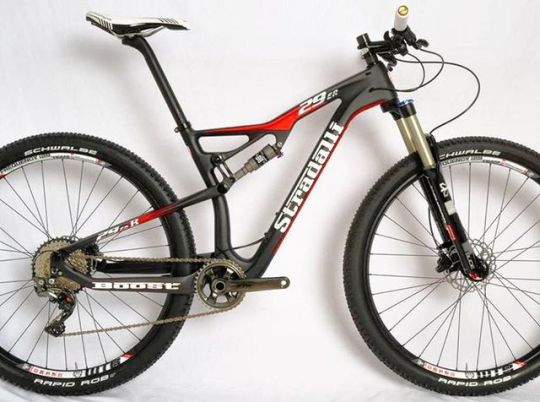
Stradalli 29er "BOOST" Full Carbon Fiber Dual Suspension Trail MTB Mountain Bike. Shimano XTR M9000. ONLY $ 2999 @stradalli_cycle @stradallicycle @rideshimano @prologo.official #stradalli#mountainbike #riding #mtb #mountainbiking #stradalli #stradallicycle #fullsuspension #29er #xtr
#Stradalli Cycle#Stradalli 29er#Stradalli boost#29er Full Suspension#29er mtb#29er#MTB#Mountain bikes
2 notes
·
View notes
Text




Ferrari 250 LM Stradale Speciale, 1964. Created to boost sales of the 250 LM race car, the road-going version had a longer wheelbase, extended from 240 cm to 260 cm to free up cabin space. Shown at both the Geneva and New York motor shows the prototype failed to attract any buyers and the the planned production run of 10 to 25 units was abandoned
#Ferrari#Ferrari 250 LM#Ferrari 250 LM Stradale Speciale#1964#on-off#prototype#road car#V12#mid-engine#geneva motor show
254 notes
·
View notes
Photo


Otto owns two motorbikes, one Indian Scout bobber and a black Ducati Panigale V4S sport - the latter being courtesy of an unbeknownst banshee scream from Regan ( @kadavernagh ) covered up for and paid by Deirdre ( @deathduty ) not that she knows she was conned for it.
The Scout blends timeless style with modern design, stripped down and blacked out it has an aggressive stance that reads powerfully. It’s a modern take on a classic style.
Specs include:
Engine Type: Liquid Cooled V-Twin
Electronic Fuel Injection System: Closed loop fuel injection / 60 mm bore
Peak Torque: 5600 rpm / 97 Nm
The Panigale is a barely road legal sport bike and its aerodynamic shape boosts its efficiency and performance on the road and track.
Specs include:
Engine: Esmosedici Stradale 90° V4, counter-rotating crankshaft, 4 Desmodromic timing, 4 valves per cylinder, liquid-cooled
Power: 157.5 kW (214 hp) @ 13,000 rpm
Torque: 124.0 Nm
9 notes
·
View notes
Text
THE BIRTH OF A NEW BREED- THE FERRARI SF90 STRADALE





The engineers at Ferrari sat down and thought of embracing the future. The result was a car so fast that the likes of McLaren and Porsche were threatened. It became the first ever hybrid Ferrari to roll out of the Maranello factory.
It is called the Ferrari SF90 Stradale, which means road, and features the first PHEV (Plug-in Hybrid Electric Vehicle) architecture. So, what makes it special? The SF90 Stradale is a front wheel drive car. The engine is a hybrid which produces 769 bhp from petrol and gets an extra boost 217 bhp from three electric motors. Two of which are independent and located on the front axle, with the third at the rear between the engine and the gearbox.
The engine is an evolution of the V8 unit found in the 488 Pista. The engine's capacity has been increased to 4.0 L and the bore has also been increased to 88 mm. The exhaust system has been tweaked to make the presence of the car felt by its competition. The SF90 Stradale has a 7.9 kWh lithium-ion battery which does 100 km/h and gives a range of 26 km.
The SF90 Stradale has an 8-speed dual clutch transmission. The new transmission is 10 kg lighter and more compact than the existing 7-speed transmission used by the other existing models due to the removal of the reverse gear which is provided by the electric motors in the front. The new transmission has increased the efficiency of gear shifting by 30%.
Going eco-friendly means Ferrari must have lost its speed due to the heavy electric motors. Ferraris reply to this question was the SF90’s 0-100 km/h time of 2.5 seconds, following it the SF90 reaches 200km/h in just 6.7 seconds. The F-1 department of Ferrari taking inspiration form iconic F40 did an extraordinary job with the chassis. They have made a completely new chassis for this car by combining aluminium and carbon fibre. This improves structural rigidity and gives a suitable platform for the cars hybrid system. The car weighs around 1,570 kg including the 270 kg electric system.
The engineers at the tech department of Ferrari have employed something called the eSSC (electric Side Slip Control) which controls the torque distribution to all four wheels of the SF90 Stradale, to make the drive more enjoyable.
In the SF90, a 16-inch curved display located behind the steering wheel displays various vital statistics of the car to the driver. The car also employs a new head-up display that would reconfigure itself according to the selected driving mode. The steering wheel is from the 488 but has been given a complete overhaul. The knobs on the steering wheel are all touch functions. the small bits of the steering wheel like the indicators and the flappy gear paddles are retained from the 488. The interior has a very neat trick up its sleeve, the sound of the engine from the bay is sent to the cabin for making the drive exciting.
The Assetto Fiorano is a track focused SF90. What makes it faster than the standard SF90 is the racing derived Multimatic shocks and light weight carbon fibre parts on the underbody. It also employs a lightweight titanium exhaust system which saves 30 kgs compared to the Standard road car.
The SF90 is a great car, the performance is of the roof and the styling of the car is very futuristic which makes it worthy to be part of the hyper-car squad. Coming into the market 6 years later compared to its competitions from the likes of McLaren and Porsche releasing their hybrid hypers in 2014, the Ferrari SF90 Stradale is still a car to watch out for.
1 note
·
View note
Text
Ferrari Announces New Production Supercar
Today, Ferrari announced their entry in the plug-in hybrid supercar world. The SF90 Stradale features a turbocharged V8 with a 7.9kWh lithium-ion battery and three electric motors which will allow owners to do over 20 miles of driving in full electric mode, as well as provide 1,000 horsepower. It is also the first Ferrari to have all-wheel-drive capability.
The existing LaFerrari uses a hybrid system known as HY-KERS but is not a full hybrid as the electric motors of the LaFerrari can’t independently move the car forward. No word yet on price, but it is expected to be produced is very limited numbers.
The most powerful Prancing Horse car ever references Scuderia Ferrari
Maranello, 29 May 2019 – Ferrari introduces a new chapter in its history with the introduction of its first series production PHEV (Plug-in Hybrid Electric Vehicle), the SF90 Stradale, images, videos and information on which can be seen on the dedicated web site: SF90stradale.com. The new model is extreme on every level and represents a true paradigm shift, because it delivers unprecedented performance for a production car. Figures such as 1,000 cv, and a weight-to-power ratio of 1.57 kg/cv, and 390 kg of downforce at 250 km/h not only put the SF90 Stradale at the top of its segment, but also mean that a V8 is the top-of-the-range model for the first time in the marque’s history.
The car’s name encapsulates the true significance of all that has been achieved in terms of performance. The reference to the 90th anniversary of the foundation of Scuderia Ferrari underscores the strong link that has always existed between Ferrari’s track and road cars. A brilliant encapsulation of the most advanced technologies developed in Maranello, the SF90 Stradale is also the perfect demonstration of how Ferrari immediately transitions the knowledge and skills it acquires in competition to its production cars.
The SF90 Stradale has a 90° V8 turbo engine capable of delivering 780 cv, the highest power output of any 8-cylinder in Ferrari history. The remaining 220 cv is delivered by three electric motors, one at the rear, known as the MGUK (Motor Generator Unit, Kinetic) due to its derivation from the Formula 1 application, located between the engine and the new 8-speed dual-clutch transmission on the rear axle, and two on the front axle. This sophisticated system does not, however, make for a more complicated driving experience. Quite the opposite, in fact: the driver simply has to select one of the four power unit modes, and then just concentrate on driving. The sophisticated control logic takes care of the rest, managing the flow of power between the V8, the electric motors and the batteries.
The SF90 Stradale is also the first Ferrari sports car to be equipped with 4WD, a step necessary to allow the incredible power unleashed by the hybrid powertrain to be fully exploited, ensuring the car has become the new benchmark for standing starts: 0-100km/h in 2.5 sec and 0-200km/h in just 6.7 seconds.
Ferrari’s engineers were able to further broaden the spectrum of dynamic controls by introducing the full-electric front axle, known as the RAC-e (electronic cornering set-up regulator). As well as exclusively providing propulsion in electric drive, the two front motors independently control the torque delivered to the two wheels, extending the concept of Torque Vectoring. Fully integrated into the car’s vehicle dynamics controls, the RAC-e governs the distribution of torque, making driving on the limit much simpler and easier.
The introduction of this hybrid architecture was a challenge with regard to managing the additional weight which was resolved by an obsessive attention to detail and the overall optimisation of the whole of the car. For maximum performance in terms of overall weight, rigidity and centre of gravity, the chassis and bodyshell of the SF90 Stradale is all new, built using multi-material technology, including, for example, carbon fibre.
The development of a hybrid car of this kind demanded the development of a series of innovative aerodynamic solutions. The significant boost in the power unit’s performance brought with it an increase in the amount of heat energy to be dissipated and required the development team to carry out an in-depth review of the aerodynamic flows on the radiating masses. It also demanded new solutions to increase downforce efficiently and guarantee maximum stability at all speeds and in all driving conditions.
Particularly noteworthy is the innovative shut-off Gurney, a patented active system located at the rear of the car which regulates the air flow over the upper body, reducing drag at high speeds with low lateral dynamics loads and increasing downforce in corners, under braking and during changes of direction.
The new car is epoch-changing from a stylistic perspective as it completely rewrites the mid-rear-engined sports berlinetta proportions introduced on the 360 Modena twenty years ago, instead taking its inspiration from Ferrari’s recent supercars. A good example is the cockpit, which has a smaller frontal section and is placed closer to the front of the car to reduce drag. This was also achieved without impacting on-board comfort.
The track-derived “eyes on the road, hands on the wheel” philosophy takes on a truly central role for the first time too, significantly influencing the ergonomics and styling of the interior. The result is an HMI (Human-Machine Interface) and interior layout concept that are a complete departure from previous models.
Another major innovation is the steering wheel which now has a touchpad and a series of haptic buttons that allow the driver to control virtually every aspect of the car using just their thumbs. The central instrument cluster is now entirely digital with the first automotive application of a 16” curved HD screen which can be fully configured and controlled using the controls on the steering wheel.
On the central tunnel, improved ergonomics have been combined with an element from the past: the automatic gearbox controls are now selected by a grille-style feature that references Ferrari’s legendary manual gear-shift gate. Thus past and present skilfully merge to point the new Ferrari towards the future.
The SF90 Stradale also sees the debut of the new ignition key with full keyless technology which will gradually be introduced across the rest of the range, personalised with the model’s name. Thanks to a special compartment in the central tunnel, it becomes an integral part of the car’s styling.
In addition to the sporty version, which references the shape and colour of the signature rectangular Prancing badge sported by Ferrari’s road cars, there will also be a more elegant metal-coloured version.
For the first time on a Ferrari, clients can choose between the standard car and a version with a more sports-oriented specification. The Assetto Fiorano specification includes significant upgrades, including special GT racing-derived Multimatic shock absorbers, extra lightweight features made from high-performance materials such as carbon-fibre (door panels, underbody) and titanium (springs, entire exhaust line), resulting in a weight-saving of 30 kg. Another difference is the high downforce carbon-fibre rear spoiler which generates 390 kg of downforce at 250 km/h. The Assetto Fiorano includes Michelin Pilot Sport Cup2 tyres designed specifically to improve performance on the track in the dry. They feature a softer compound and fewer grooves than the tyres provided as standard.
POWERTRAIN
The SF90 Stradale is the first ever Ferrari to feature PHEV (Plug-in Hybrid Electric Vehicle) architecture which sees the internal combustion engine integrated with three electric motors, two of which are independent and located on the front axle, with the third at the rear between the engine and the gearbox.
The internal combustion engine and the electric motors work in synergy to unleash an incredible 1,000 cv which means the SF90 Stradale sets a whole new benchmark in terms of its performance and innovative content not just with regard to the Ferrari range, but also its competitors.
INTERNAL COMBUSTION ENGINE
Thanks to its 780-cv power output, the turbo V8 featured in the SF90 Stradale raises the bar for the performance limits achievable by this type of architecture. The starting point was the F154 family engine which has won the International Engine of the Year award for the fourth consecutive year, an unprecedented achievement for any power unit.
Together with its 195 cv/l specific power output, which is the highest in the segment, the engine also delivers 800 Nm of torque at 6,000 rpm. To deliver this extraordinary result, Ferrari’s engineers focused on several different areas of the engine, starting by increasing its capacity from 3,902 cc to 3,990 cc thanks to a larger bore of 88 mm.
The intake and exhaust system was completely redesigned and now features a new, narrower cylinder head with a central injector and the adoption of 350-bar GDI, another first for a Ferrari V8.
To improve the internal fluid dynamics, not only was a larger diameter intake valve adopted but the ducts are all horizontally lined up at engine head height; the turbo charger assembly has been lowered while the exhaust line is higher, as testified by the fact that the tail pipes are now in the upper section of the rear bumper. The turbos are now equipped with electronically-controlled wastegates to improve catalyser heating and new compressor volutes to optimise fluid-dynamics.
The re-engineering goes well beyond fluid-dynamics: the rationalisation of the layout has resulted in both a lower centre of gravity, thanks in part to the adoption of a smaller-diameter fly wheel, and a reduction in overall weight thanks to the use of Inconel instead of steel for the exhaust manifold. Meticulous attention was lavished on sound quality when redesigning the exhaust system and the result is fuller, richer harmonics across the entire frequency range.
GEARBOX
The SF90 Stradale sports a completely redesigned 8-speed, oil-bath, dual-clutch transmission. New gear ratios and improved transmission efficiency yield a significant reduction in fuel consumption in urban and motorway driving (-8% in the WLTP cycle) without having to compromise on performance. In fact, there is even a 1% improvement in efficiency on the track.
An optimised layout, achieved through the adoption of a dry sump and a significantly more compact clutch assembly with a 20% smaller exterior diameter than the current gearbox, has shaved 15 mm off the installed height in the car which, in turn, lowers the centre of gravity of the running gear by the same amount.
Despite the addition of an eighth gear and a maximum torque boost to 900 Nm (the latter an increase of 20% on the current 7-speed), the gearbox’s overall weight is actually 7 kg lower. That figure rises to 10 kg when the elimination of the reverse gear – now incorporated in the function of the front electric motors – wheels is included.
The new clutch’s performance is 35% higher, transmitting up to 1200 Nm in dynamic torque in gear shifts. Thanks to new-generation actuation hydraulics, total clutch fill times have been cut to 200 ms compared to the 488 Pista’s 300 ms.
ELECTRIC MOTORS
The SF90 Stradale is equipped with three electric motors capable of generating a total of 220 cv (162 kW). A high performance Li-ion battery provides power to all three motors and guarantees a 25-kilometre range in all-electric eDrive mode, using just the front axle. When the internal combustion engine is turned off, the two independent front motors deliver a maximum speed of 135 km/h with longitudinal acceleration of ≤0.4 g. Reverse can only be used in eDrive mode which means the car can be manoeuvred at low speeds without using the V8. The front motors are integrated into the launch control strategy for maximum performance when accelerating.
FUNCTION MODES
The internal combustion engine and electric motors work in synergy to generate an incredible 1,000 cv, which puts the SF90 Stradale at the very top of the range in performance terms. The control logic optimally manages the power flows either with the emphasis on efficiency or performance depending on the user profile selected by the driver.
Thanks to an additional steering wheel-mounted selector, dubbed the eManettino (analogous to the Manettino which is used to set the electronic vehicle dynamics modes), the driver can choose from four different power unit management modes:
eDrive: the internal combustion engine remains off and traction is entrusted entirely to the electric front axle. Starting with a fully charged battery, the car can cover up to 25 km in this mode. This mode is ideal for city centre driving or any other situation in which the driver wishes to eliminate the sound of the Ferrari V8.
Hybrid: this is the default setting when the car is turned on, in which the power flows are managed to optimise the overall efficiency of the system. The control logic autonomously decides whether to keep the internal combustion engine running or turn it off. If it is on, the internal combustion engine can run at maximum power thus guaranteeing powerful performance whenever the driver requires.
Performance: unlike ‘Hybrid’, this mode keeps the ICE running because the priority is more on charging the battery than on efficiency. This guarantees that power is instantly and fully available when required. This mode is best suited to situations in which driving pleasure and fun behind the wheel are the main focus.
Qualify: this mode allows the system to achieve maximum power output by allowing the electric motors to work at their maximum potential (162kW). The control logic prioritises performance over battery charging.
VEHICLE DYNAMICS
The exceptional work done to boost the power unit’s power would have all been in vain without in-depth dynamics research and the development of a whole series of solutions to boost the SF90 Stradale’s lap times, whilst simultaneously guaranteeing that drivers of all kinds could make full use of the car’s potential and have fun behind the wheel.
The new hybrid architecture required extensive and lengthy integration work on the car’s many different control logics. The three areas concerned are: the high-voltage system controls (battery, RAC-e, MGUK, inverter), engine and gearbox control and vehicle dynamics controls (traction, braking, Torque Vectoring).
Integrating these areas with the existing vehicle control logics led to the development of the new eSSC (electronic Side Slip Control) vehicle control system. The eSSC introduces three innovative dynamic regulation and distribution strategies for engine torque to all four wheels:
- Electric Traction Control (eTC): optimally manages the availability of the torque – both ICE and electric – distributing it to the individual wheels to suit driving conditions and grip requirements
- brake-by-wire control with ABS/EBD: allows the braking torque to be split between the hydraulic system and the electric motors (brake torque blending), allowing regenerative recovery under braking which actually boosts performance and brake feel rather than compromising them
- Torque Vectoring: available on the front axle to manage electric traction on outside and inside wheel in cornering to maximise traction exiting the corner and help ensure easy, confident, high-performance driving.
Longitudinal dynamics
Thanks to the introduction of the RAC-e electric axle and traction control, eTC (Electronic Traction Control), on all four wheels, it is now possible to exploit the additional grip offered by the front wheels when accelerating. Improved overall grip combined with the improved power delivery from the electric motors at low speeds, has significantly improved the SF90 Stradale’s longitudinal acceleration, making it the new benchmark for standing starts.
Even at high speeds and in higher gears, the combined contribution of the electric motors in maximum traction conditions helps reduce ICE response times, significantly improving longitudinal acceleration and thus performance.
The new brake-by-wire system manages kinetic energy recovery through the electric motors by implementing electronically-controlled blending of hydraulic and electric braking, entirely unnoticed by the driver. Under normal braking conditions, energy recovery using the electric motors is the priority. The hydraulic system intervenes to support the electric one under hard braking.
Lateral dynamics
The eSSC control logic also supervises how torque is distributed between the front wheels using the RAC-e motors and the electronic control derived from the Torque Vectoring concept, varying between the inside and the outside wheel in cornering based on dynamic conditions with the aim of maximising performance and delivering easier handling.
CHASSIS
Although the extra 270 kg required to incorporate the hybrid system into the car have been amply offset by the extra power delivery (220 cv, with a weight/power ratio for the system alone of 1.23 kg/cv), in-depth research was still required to ensure that overall weight was kept to 1,570 kg, thus guaranteeing a record-breaking weight/power ratio of 1.57 kg/cv.
The chassis has been completely redesigned with a multi-material and multi-technology approach to absorb the extra stresses associated with the new power unit and the introduction of AWD. A number of technological innovations have been introduced, not least hollow castings, which replace the traditional ribbed castings. Other new solutions include an all-carbon-fibre bulkhead between the cabin and the engine and two new aluminium alloys, one of which is a high-strength 7000 series alloy for some of the sheet metal. As a result, the SF90 Stradale chassis boasts 20% higher bending stiffness and 40% higher torsional rigidity than previous platforms without any increase in weight. This has significant advantages for the car’s dynamics. NVH (noise, vibration, harshness) characteristics have also been improved by the use of a new alloy known as ‘quiet aluminium’ for the floor pan.
AERODYNAMICS
The greatest challenge in crafting the aerodynamics of the SF90 Stradale was posed by the need to deliver downforce and aerodynamic efficiency at a level never before achieved either by Ferrari or its competitors, whilst simultaneously guaranteeing that all the subsystems of the new power unit (internal combustion engine, electric motors, battery and inverters) would always function as optimally as possible.
As always, the aerodynamics department worked closely with Ferrari Design and this produced downforce and efficiency figures unmatched by any other car in the segment. Once again, they were achieved in typical Ferrari fashion: rather than using simple add-on elements, the car’s forms were meticulously sculpted.
The results in terms of performance are impressive indeed: thanks to its ability to generate 390kg of downforce at 250 km/h, the SF90 Stradale is now the new benchmark for downforce and efficiency in high-performance road cars.
THERMAL AERODYNAMICS
Smart cooling flow management is the first step in defining a successful car layout and, in this particular case, guaranteeing that 1,000 cv can be efficiently and uncompromisingly unleashed in all kinds of driving conditions without in any way compromising aerodynamic drag and downforce coefficients.
The internal combustion engine, gearbox, turbo-charged air, battery pack and electric motors, the inverters and charging systems and brakes all need cooling. Meticulous attention was paid to the design of the engine bay which houses both the usual internal combustion engine systems that generate temperatures of nearly 900°C, and highly temperature-sensitive electronic components.
The coolant for the internal combustion engine and the gearbox (high temperature circuit) is cooled by two radiators located ahead of the front wheels. The hot air flow coming off those radiators is channelled into the side areas of the underbody rather than along the car’s flanks. This means that the air flow along the flanks is cooler when it enters the air intakes ahead of the rear wheels, thereby boosting the efficiency of the intercooler radiators.
The electric motors and the inverters are cooled by a separate circuit with its own radiator at the front of the car with a central intake on the front bumper.
Lastly, the cooling circuit for the brakes was completely redesigned to meet the demands of the car’s additional performance. In close collaboration with Brembo, Ferrari developed a new brake calliper for the front which is being used for the very first time on a road car. The calliper has an integrated aerodynamic appendage which distributes the highly charged air flow from the special air intake directly under the headlights on the front bumpers, more efficiently to the brake pads and disc. The rear brakes are cooled by the flow from two air intakes on the underbody near the rear wheels.
REAR AERODYNAMICS
In terms of design, the SF90 Stradale’s engine cover has been kept extremely low to improve the interaction between the flows over and under the body, and thus minimise drag.
The end section of the engine cover features a suspended wing divided in two sections: one fixed, which incorporates the third brake light, and one mobile with a wedge-shaped front area. The latter has been dubbed the shut-off Gurney and is under patent. It is also the most innovative downforce management device on the car. In urban usage or at maximum speed, the two sections are aligned and suspended above the engine cover, with the mobile wedge acting as an efficient fairing to the fixed element, allowing the air to flow both above and beneath the shut-off Gurney.
In high downforce conditions (such as driving through corners, braking or in abrupt changes of direction), the mobile element is lowered by a pair of electric actuators, closing the lower blown area and uncovering the fixed element, generating a new tail geometry characterised by a broad load surface topped by a powerful nolder.
The system is controlled by a sophisticated control logic that checks parameters such as speed, acceleration (lateral and longitudinal) and driver inputs, hundreds of times a second in order to establish the most efficient configuration to adopt.
FRONT AERODYNAMICS
Rear downforce is balanced at the front of the car by a complex and optimised system of vortex generators. Although this is not its very first appearance on a Ferrari sports car, the system has been honed to the maximum on the SF90 Stradale: the front section of the chassis has been raised 15 mm compared to the central section of the chassis at the point where the vortex generators are located, thus increasing the amount of air channelled towards them and boosting their effect.
The front bumper is divided into two sections that have specific wing functions. Between the upper section and the bonnet is a pronounced indent that locally compresses the flow. This feature, together with the two diffusers ahead of the front wheels, contributes to generating downforce over the front axle.
FORGED WHEELS WITH BLOWN GEOMETRY
Specific aerodynamic research went into the geometry of the forged wheels which are made using a construction technology that allows greater freedom when it comes to aerodynamic solutions. The specific geometry of the wheels incorporate radial elements on the outer channel which are equally spaced between the spokes and designed to act as wing profiles. The geometry of these profiles mean that the wheel works like a rotor blade, very efficiently managing the flows from inside the wheelarch and guaranteeing two main effects:
- Air evacuation from wheel arch is boosted, creating suction that also benefits the flow that passes through the front diffusers, generating extra downforce over the front;
- The flow exiting the wheel rim is lined up with the longitudinal flow running along the sides, thereby reducing deviations caused by the air mass exiting at an angle to the direction of movement, thus reducing the car’s Cd.
DESIGN
The SF90 Stradale is the most advanced car in the range from a point of view of performance and technology. The definition of the exterior styling was inspired by that principle: to create a forward-looking, innovative design that transmits the car’s mission as an extreme sports car – Ferrari’s first series production supercar.
Ferrari Design has thus completely revisited the proportions of the front, central and rear volumes in a radical evolution of the forms of Ferrari’s mid-rear-engined production berlinettas of the last twenty years.
The aim was to design a leading-edge extreme car capable of delivering completely unprecedented performance for a Prancing Horse production car. The SF90 Stradale slots in between the mid-rear-engined coupés, today represented by the F8 Tributo, and supercars of the likes of LaFerrari, and is the new standard-bearer for hyper-technological extreme cars brimming with future-forward content.
EXTERIOR
The SF90 Stradale’s architecture, in which the cabin is located ahead of the mid-mounted engine, provided Flavio Manzoni and his team of designers at the Ferrari Styling Centre, with the ideal platform on which to craft a genuine supercar of impeccable proportions.
More compact overhangs (the rear one is shorter than the front one in particular) and the frontward-shift of the cabin have created a cab-forward-type architecture which emphasises the fact that the engine is mid-mounted. A very low centre of gravity has also allowed the designers to lower the cabin area by 20 mm. Combined with a more curved windshield, slender A-posts and a wide track, this creates a beautifully proportioned car with sleeker volumes.
The compact bubble-shaped cabin has an aeronautical cockpit feel and the fact that it has been shifted so far forward is further emphasised by the geometry of the two body-coloured rear flying buttresses that enclose the rear.
Another signature solution is the headlights which hail a move away from the L-shaped look, to a slender slit design integrated with the brake air intakes resulting in a characteristic C-shape which lends the front of the car an original and futuristic appeal.
In an absolute first for a Ferrari, the SF90 Stradale uses matrix LED headlight technology to improve visibility in all driving conditions thanks to active beam control.
The rear of the car is dominated by high exhaust pipes which are the result of optimisation of the exhaust line layout. Because the power- train is significantly lower in the car than in the past, the designers were also able to lower the car’s tail. Another deviation from the styling typical of past berlinettas is the way the profile of the rear screen no longer follows the line from the roof to the rear bumper. This element of styling discontinuity is evidenced by the separation of the screen from the cooling grille.
The tail lights have also evolved quite radically from Ferrari’s iconic round shape. The eye-catching, more horizontal luminous rings create a more horizontal perception of the tail lights which in turn visually lowers the height of the tail.
INTERIOR
While the SF90 Stradale’s exterior was crafted to underscore its seamless combining of form, technology and performance, the interior is even more radical. The very explicit aim there was to create a cockpit that ushered in an entirely new design direction, the effects of which would carry over into Ferrari’s entire future range.
The designers took a futuristic approach to the interface concept with a strong focus on creating a wraparound aeronautically-inspired cockpit with particular emphasis on instruments. This further emphasised and underscored the symbiotic relationship between car and driver. In fact, the SF90 Stradale makes an epoch-changing leap forward both in formal and content terms, updating the Human Machine Interface with all-digital technology.
In a first for a Ferrari, the central instrument cluster comprises a single 16” digital HD screen which curves towards the driver to make it easier to read and to emphasise the F1-style wrap-around cockpit effect. This is the first time this type of screen has been adopted in a production car.
When the engine and motors are off, the onboard instruments go black lending the cockpit a wonderfully sleek, minimalist look. In line with Ferrari tradition, the default screen is dominated by a large circular rev counter which, however, this time is framed by the battery charge indicator. The navigation screen is on one side of the rev counter with the audio control one on the other.
The “hands-on-the-wheel” philosophy has consistently driven the development of the human-machine interface in every Ferrari F1 car and its subsequent gradual transfer to its road-going sports cars. The SF90 Stradale’s steering wheel completes that transfer process from the competition world and also ushers in a new era by introducing a series of touch commands that allow the driver to control virtually every aspect of the car without ever taking their hands off the wheel.
The traditional controls include the now-classic steering-wheel mounted headlight control, windscreen wipers, indicators and the Manettino for driving modes.
Of the new touch controls, the compact but functional pad on the right-hand spoke allows the driver to navigate the central cluster screens, while voice and cruise controls are on the left-hand spoke. Also noteworthy is the adoption of a rotary switch for cruise control, a solution derived directly from the Formula 1 car. In the bottom left section of the central area, there are four buttons the driver uses to select the power unit use mode.
The Head Up Display is another part of the innovative HMI and allows various data to be projected onto the windshield within the driver’s field of vision so that their attention is not distracted from driving.
From a creative perspective, the SF90 Stradale interface project gave the Ferrari Style Centre’s designers the opportunity to interpret the screens in the cabin as a canvas on which all the car’s functions and controls could be represented. The screen graphics on the SF90 Stradale were also designed to create a 3D effect which is particularly striking during transitions, such as when the instrument panel is turned on or when swapping from one screen to the next.
Alongside the new-concept HMI, another major theme tackled in the cabin was the tunnel area interface. The F1 controls on the “bridge” are probably the most iconic of the Ferraris of recent generations. These have been completely redesigned and set into a modern metal plate which references an equally iconic feature from the past: the classic gear lever gate.
7 YEARS MAINTENANCE
Ferrari’s unparalleled quality standards and increasing focus on client service underpin the extended seven-year maintenance programme offered with the SF90 Stradale. Available across the entire Ferrari range, the programme covers all regular maintenance for the first seven years of the car’s life. This scheduled maintenance is an exclusive service that allows clients the certainty that their car is being kept at peak performance and safety over the years. This very special service is also available to owners buying pre-owned Ferraris.
Regular maintenance (at intervals of either 20,000 km or once a year with no mileage restrictions), original spares and meticulous checks by staff trained directly at the Ferrari Training Centre in Maranello using the most modern diagnostic tools are just some of the advantages of the Genuine Maintenance Programme.
The service is available on all markets worldwide and from all Dealerships in the Official Dealership Network.
The Genuine Maintenance programme further extends the range of after-sales services offered by Ferrari to satisfy clients wishing to preserve the performance and excellence that are the signatures of all cars built at the factory in Maranello which has always been synonymous with leading-edge technology and sportiness.
TECHNICAL SPECIFICATIONS
Internal combustion engine
Type V8 – 90° – turbo – dry sump
Total displacement 3990 cc
Maximum power output* 574 kW (780 cv) @ 7500 rpm
Max torque 800 Nm @ 6000 rpm
Specific power output 195 cv/l
Max. engine speed 8000 rpm
Compression ratio 9.5:1
Hybrid system
Maximum power electric motors 162 kW (220 cv)
Battery capacity 7.9 kWh
Max. range under electric power 25 km
Dimensions and weight
Length 4710 mm
Width 1972 mm
Height 1186 mm
Wheelbase 2650 mm
Front track 1679 mm
Rear track 1652 mm
Dry weight** 1570 kg
Weight distribution 45% front – 55% rear
Boot capacity 74 l
Rear shelf capacity 20 l
Fuel tank capacity 68 l (2 reserve)
Tyres
Front 255/35 ZR 20 J9.5
Rear 315/30 ZR 20 J11.5
Brakes
Front 398 x 223 x 38 mm
Rear 360 x 233 x 32 mm
Transmission and gearbox 8-speed, F1 dual-clutch transmission
Electronic controls eSSC: E4WD (eTC, eDiff3), SCME-Frs, FDE2.0, EPS, high performance ABS/EBD with energy recovery
Performance
Maximum speed 340 km/h
0-100 km/h 2.5 s
0-200 km/h 6.7 s
100-0 km/h <29.5 m
Dry weight/power 1.57 kg/cv
Laptime at Fiorano 79s
1 note
·
View note
Photo
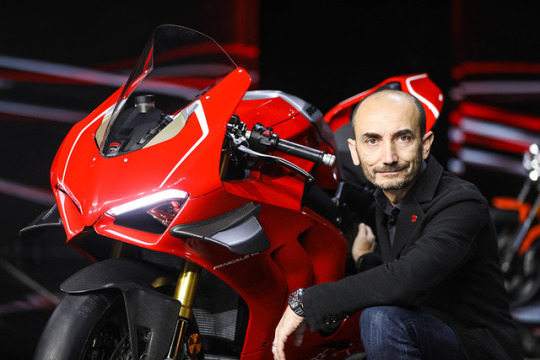
Ducati World Première 2019
The Ducati World Première 2019 was the final act of the Global Dealer Conference, an event uniting key Ducati dealers - about a thousand people - representing 734 dealers in 91 countries. Streamed worldwide on the internet, the event was held on the evening of Sunday 4 November at Milan's Linear Ciak theatre. Claudio Domenicali, CEO of Ducati Motor Holding, unveiled the new 2019 range personally, illustrating company goals and celebrating a thrilling 2018 race season.
"Ducati has achieved a striking degree of maturity”, stated Claudio Domenicali on opening the Ducati World Premiere 2019.
"It is a global flag bearer of some of the best aspects of Made in Italy excellence. Based on core values of Style, Sophistication and Performance, our company now offers a range as broad as it is state-of-the-art. This year sees the first major overhaul of the entire Scrambler range since its inception, plus a complete renewal of the Diavel and Hypermotard, two bikes that are firm favourites with Ducatisti. Today, safety and rider-friendliness have hit new heights, yet the brand's sporting soul is as evident as it has ever been. The Panigale V4 R, in fact, is the most powerful factory motorcycle ever built by Ducati. We're also delighted with our on-line presence, an area that has enjoyed excellent growth, thus confirming the extraordinary appeal of the entire Ducati product range.”

To get the show under way, the bikes already presented ahead of the Milan fair were illustrated: the new Ducati Scrambler range, with 4 new motorcycles spanning from the Icon version to the more distinctive Cafè Racer, Full Throttle and Desert Sled, and the Multistrada 1260 Enduro.
The new Ducati e-mountainbike, the MIG-RR, also played a major role in the presentation and will have its own special area on the Ducati stand at EICMA 2018.
Ahead of the unveiling of the all-new motorcycles, the Première also saw presentations of the new versions that will join the 2019 range. These include the Monster 25th Anniversary, first seen at WDW2018, and the new Monster 821 stealth that features matt black livery and red graphics, quick shift system, adjustable fork and nose fairing.
Another exciting 2019 bike is the new Multistrada 950 S. A major upgrade of the smallest Ducati 'multibike', this latest Multistrada features cutting-edge technology to boost safety and riding enjoyment: electronic Ducati Skyhook Suspension (DSS), Ducati Quick Shift up & down (DQS), full-LED headlight, 5" colour TFT display, Hands Free system, Cruise Control and backlit switchgear controls. From a styling viewpoint, the new Multistrada 950 inherits the side 'wings' from its bigger 1260 counterpart, making the front even cleaner and more streamlined. It also features hydraulic control and, above all, Bosch ABS Cornering, which increases active safety.

The first of the all-new motorcycles in the Ducati 2019 range is the Hypermotard 950, now racier, more adrenalin-packed and rider-friendly. The Ducati 'fun bike' par excellence has been given a full-blown makeover: the new look takes its cue from the supermotard race world, the completely overhauled ergonomics ramps up the fun and riders can now count on an ultra-advanced chassis set-up and electronics package.
A full 4 kg lighter than the previous model, the new Hypermotard 950 mounts a renewed 937 cm³ Testastretta 11° engine with a more muscular 114 hp, combining greater pulling power with new electronics to ensure smoother control.
The Hypermotard 950 electronics package includes Bosch Cornering ABS with the Slide by Brake function, Ducati Traction Control EVO (DTC EVO), Ducati Wheelie Control (DWC) EVO and Ducati Quick Shift (DQS) Up and Down EVO (as standard on the 950 SP version and available as an accessory on the 950).
Now even higher-performing and with racing overtones, the Hypermotard 950 SP features a flat seat, increased-travel Öhlins suspension to ensure an acuter lean angle (+3°), Marchesini forged wheels and Ducati Quick Shift (DQS) Up and Down EVO.
Another major development, unveiled during the Ducati World Première 2019, is the new Diavel 1260. Unconventional, unique and absolutely unmistakeable: as soon as it was launched at EICMA 2010 the Diavel stunned with its personality, design, sport naked handling and thoroughbred engine.
The second-generation Diavel 1260 remains faithful to the original spirit of that incredibly special bike, drawing on its key styling elements and putting a decidedly more contemporary slant on them: it now offers more assertive outlines and higher performance, is more fun on mixed-road routes and offers greater comfort for rider and passenger alike. Its sport naked soul is evident in the Testastretta DVT 1262 engine, capable of delivering 159 hp (117 kW) at 9,500 rpm and 129 Nm (13.1 kgm) at 7,500 rpm. An immensely satisfying torque curve ensures both breath-taking acceleration and a low-rev smoothness that's ideal for everyday riding or touring. An upgraded chassis set-up makes the Diavel 1260 more responsive on mixed-road routes while top-drawer technology and electronics provide braking performance on a par with that of a sport bike (and does so safely, thanks to Bosch Cornering ABS) and user-friendly engine performance control. The excellent riding position and 'power cruiser' ergonomics that helped make this motorcycle so successful remain unaltered: what has changed is the chassis set-up, characterised by a new tubular steel Trellis frame that goes perfectly with another Diavel hallmark, the 17" inch rear wheel with its 240 mm wide tyre. The outcome? Superb handling, surprising lean angles and outstanding comfort.
A sportier S version of the Diavel 1260 is also available: features include fully adjustable Öhlins suspension at both front and rear, dedicated wheels and an even higher-performance braking system. Moreover, the S version mounts Ducati Quick Shift up & down Evo (DQS) as standard to allow clutchless shifting.
The new livery on the Panigale V4 S Corse aroused enthusiastic interest. Created using official Ducati MotoGP team colours, it mirrors the special version with the exact same colour scheme that Michele Pirro rode to victory in the Race of Champions at WDW2018. That bike and the other 11 variants that competed in the race were won by twelve lucky enthusiasts in a global auction that attracted record-breaking bids.
Nevertheless, the undisputed star of the Ducati World Première 2019 - and aspiring candidate for the title of 'best-looking bike of EICMA2018' - was the Panigale V4 R.

Compared to previous R versions, the Panigale V4 R is now even more specialised and bristles with technology taken directly from MotoGP. The modifications extend far beyond the engine and suspension set-up: they also include the fairing, designed and developed by Ducati Corse in close collaboration with the Ducati Style Centre to improve aerodynamic efficiency. The new fairing also incorporates the aerofoil appendages developed for the MotoGP prototypes. Made of carbon fibre, they increase stability throughout the ride, to allow for reduced reliance on electronic controls, boosting confidence for the pinnacle of rider performance
The Panigale V4 R is, to all intents and purposes, a road-legal WSBK category competition bike and constitutes the technical foundation for the official Ducati Superbikes that will compete in the World Championship as from the 2019 season.
The Desmosedici Stradale 1103 cm3 engine has been replaced with the 998 cm3 Desmosedici Stradale R to comply with displacement limits set by WSBK rules. Unlike the larger V4 - designed to provide fluid power delivery and excellent low-rev pulling power for optimal road use - the 998 cm3 Desmosedici Stradale R offers more extreme performance as power delivery has been designed with the track in mind. Moreover, it's characterised by lighter internal components (which reduce overall bike weight by 2 kg compared to the Panigale V4S, bringing kerb weight down to just 193 kg). Greater air intake efficiency allows faster engine 'rev-up' and shifts the rpm red zone higher to ensure improved acceleration. The result is 221 hp (162 kW) of power at 15,250 rpm (EU homologation values), 2,250 rpm higher than the point of peak power on the 1103 cm3 V4. These impressive figures can be taken even higher by fitting the full-racing Ducati Performance exhaust by Akrapovič, which boosts maximum power to 234 hp (172 kW) at 15,500 rpm. In short: the most powerful Ducati factory motorcycle ever!
Solid and successful - with dream bikes of unparalleled design and eye-catching accessories and apparel that faithfully reflect their style and originality - Ducati looks forward to welcoming the public to the 76th edition of EICMA (Hall 15 Stand N06) and continuing the pivotal role this iconic brand plays in the international motorcycle industry.
Ducati Model Year 2019
New Models
Panigale V4 R *
Diavel 1260 / S *
Hypermotard 950 / SP *
Multistrada 1260 Enduro
Multistrada 950 / S
Scrambler Icon
Scrambler Full Throttle
Scrambler Desert Sled
Scrambler Café Racer
* Completely new bikes
New Versions
Monster 821 stealth
Monster 25th Anniversary
Panigale V4 S Corse
18 notes
·
View notes
Photo
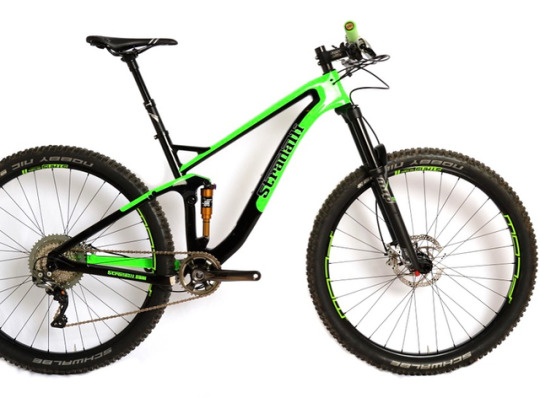
Stradalli Colorado Green Boost 29er All Mountain Full Carbon Fiber Dual Suspension Bike, Shimano XTR , MRP 150 Boost Fork , X-Fusion Gold , TRP 4 piston brakes and Stans Flow Enduro Wheels. #colorado #trail #trailbike #mtb #stradalli #29er #enduro #stans #endurobike #trp #shimano #xtr #mrp #xfusion #schwalbetires #mountainbike #stradallicycle #carbonenduro #carbonmtbbike https://www.instagram.com/p/Bnm92g2Aw4C/?utm_source=ig_tumblr_share&igshid=1rcaoddrgoe12
#colorado#trail#trailbike#mtb#stradalli#29er#enduro#stans#endurobike#trp#shimano#xtr#mrp#xfusion#schwalbetires#mountainbike#stradallicycle#carbonenduro#carbonmtbbike
1 note
·
View note
Text
Ferrari Shares Resume Advance, Shaking Off Leadership Worries
New Post has been published on https://perfectirishgifts.com/ferrari-shares-resume-advance-shaking-off-leadership-worries/
Ferrari Shares Resume Advance, Shaking Off Leadership Worries
Ferrari Roma (AP Photo/Gregorio Borgia)
Legendary supercar maker Ferrari’s share price wobbled a bit late last week after news its CEO Louis Camilleri had quit, but quickly resumed an upward trend as rumors swirled about the likely replacement.
Ferrari shares rose about 0.5% early on Monday in Europe to €177.65. The shares are now 52% higher than the lowest point of the coronavirus-induced slump in April.
Ferrari has such a well-established game plan and unique position in the market – it is now valued more as a luxury goods maker than just another desperate carmaker scrapping for profits – that any controversy over the leadership shouldn’t trouble shareholders.
The Italian media has reported some early favorites for the job, including Fiat Chrysler Automobiles CEO Mike Manley, Ferrari F1 CEO Stefano Domenicali and Maserati CEO Davide Grasso. Manley isn’t Italian, and surely wouldn’t be interested in what would be a huge demotion.
When Ferrari announced Camilleri had quit for health reasons, it also added mysteriously that this wasn’t the only reason, but didn’t elaborate. The biggest problem facing Ferrari is its transition to the world of electromobility and Camilleri has been on the record showing little enthusiasm for an all-electric sports car. Under his leadership, Ferrari said 60% of its models would have hybrid power by 2022, but Camilleri recently said if a V-12 Ferrari is only used for about 3,000 kilometers a year, it would emit less CO2 than a small car running very day.
Ferrari chairman John Elkann will take over as CEO temporarily. Elkann, from Italy’s Agnelli family, is CEO of Exor, the family’s investment company. Exor controls Ferrari. Elkann will become chairman of Stellantis, the combination of Fiat Chrysler and Groupe PSA set to be launched early in 2021.
In the 3rd quarter, Ferrari’s earnings rose 6.4% compared with the same period last year to €330 million ($390 million) while sales fell 3% to €880 million ($1 billion). Ferrari said sales and profits were boosted by sales of the higher-priced Monza 12-cylinder vehicles, and deliveries of the SF90 Stradale. The new Roma was fulfilling targets. Ferrari unveiled a new more powerful Portofino in September.
For all of 2020, according to analysts, core earnings should reach about €1.125 billion ($1.3 billion), up a bit from the previously predicted €1.075 billion to €1.125 billion.
Not all analysts see constant sunny uplands for Ferrari. After the 3rd quarter results Bernstein Research’s Arndt Ellinghorst wondered if the current level of profit was sustainable, and the share price might be a bit high.
Morgan Stanley MS has said it expects Ferrari sales to double by 2030 to over 20,000, and double again by 2040. In 2019, Ferrari sold 10,131 vehicles, up 9.5% on the previous year.
A Ferrari board meeting Tuesday may shed light on the new CEO’s identity.
More from Cars & Bikes in Perfectirishgifts
0 notes
Photo





Ferrari SF90 Stradale Makes Chinese debut
The world’s most renowned Italian luxury sports car brand Ferrari launched a spectacular event in Shenzhen to host the China Premiere of the Ferrari SF90 Stradale, the first series production PHEV (Plug-in Hybrid Electric Vehicle) from Ferrari. Extreme on every level, the new model has captured the hearts of millions of Prancing Horse enthusiasts around China with its unprecedented performance for a production car.
The naming of the SF90 Stradale embodies the true significance of all that has been achieved in terms of performance. The “SF90” refers to the 90th anniversary of the foundation of Scuderia Ferrari, while “Stradale” means road in Italian, accentuating the inseparable link that has always existed between track and road cars. With brilliant encapsulation of the most advanced technologies, the SF90 Stradale is the perfect demonstration of how Ferrari translates the knowledge and skills it acquires in competition to its production cars.
To echo the supreme combination of performance, design and cutting-edge technology of the SF90 Stradale, Shenzhen is the perfect stage for Ferrari to demonstrate its latest masterpiece. Boasting a strategic position in the Guangdong-Hong Kong-Macao Greater Bay Area, the city has leveraged on the rapid economic growth and vast industrial base over the past few decades, emerged as the leading city for high-tech development and innovative economy in China. By holding the launch event in Shenzhen, Ferrari China delivered a unique and memorable experience to all guests and Ferrari enthusiasts.
The internal combustion engine and electric motors work in synergy to generate an incredible 1,000 cv, which puts the SF90 Stradale at the very top of the range in performance terms. The SF90 Stradale is equipped with a V8 turbo engine capable of delivering 780 cv, the highest power output of any 8-cylinder in Ferrari history, which has won the International Engine of the Year award for the fourth consecutive year, an unprecedented achievement for any power unit. The remaining 220 cv is delivered by three electric motors, one at the rear, with the derivation from the Formula 1 application, and two on the front axle. The front motors are integrated into the launch control strategy for maximum performance when accelerating, setting the new benchmark for standing starts: 0-100km/h in 2.5 sec and 0-200km/h in just 6.7 seconds.
In contrast to such a sophisticated system, the new SF90 Stradale does not present a more complicated driving experience. On the contrary, it delivers a very simple user experience where the driver only needs to select one of four power unit modes, and then concentrates on driving. The sophisticated control logic takes care of the rest, managing the flow of power between the V8, the electric motors and the batteries.
The development of a hybrid car of this kind demanded the development of a series of innovative aerodynamic solutions. In order to achieve the significant boost in the power unit’s performance, the development team carried out an in-depth review of the aerodynamic flows. It also demanded new solutions to increase downforce efficiently and guarantee maximum stability at all speeds and in all driving conditions.
The new car is epoch-changing from a stylistic perspective as it completely creates a forward-looking, innovative design that transmits the car’s mission as an extreme sports car. Ferrari Design has thus completely revisited the proportions in a radical evolution of the forms of Ferrari’s mid-rear-engined production berlinettas of the last twenty years.
The track-derived “eyes on the road, hands on the wheel” philosophy takes on a truly central role for the first time. The result is an HMI (Human-Machine Interface) and interior layout concept that are a complete departure from previous models.
The SF90 Stradale also sees the debut of the new ignition key with full keyless technology which will gradually be introduced across the rest of the range, personalized with the model’s name. Thanks to a special compartment in the central tunnel, it becomes an integral part of the car’s styling.
The new SF90 Stradale represents a true paradigm shift for Ferrari, a true milestone in Ferrari’s history. It delivers a performance that is beyond imagination, setting a new benchmark for driving experience and exhilaration to our Ferrari owners and fans in China.
The starting price of the all new Ferrari SF90 Stradale is 3,988,000 RMB.
#Ferrari SF90 Stradale#SF90 Stradale#ferrari#supercars#cars#news#italian#italy#200#sf90#PHEV#hybrids#Ferrari SF90
46 notes
·
View notes
Text
2021 Ferrari Portofino M First Look: M Is for More
For better or worse, we’ve called the Portofino an everyday Ferrari—a very good, but not great, car from Maranello. That’s less of a criticism and more an observation of the real purpose of the entry-level Ferrari drop-top. We have already found it to be fast, elegant, refined, and luxuriously equipped—it’s faint praise only when you consider the other prancing horses in the stable. And with the 2021 Portofino M, Ferrari is refining the formula even further.
M stands for modificata, or modification, signaling an evolution of the existing model. Consider it a mid-cycle refresh. The real news here is that the Portofino M adopts the eight-speed dual-clutch automatic transmission from its fixed-top Roma sibling, a unit that debuted in the incredible SF90 Stradale. The Portofino M uses variable boost management to match torque output to the gear selected, limiting maximum torque to only the top two gears.
More power? That too. The Portofino M again cribs notes from the Roma and adopts the same 612-hp tune from its twin-turbo V-8 engine, a 20-hp bump over the current Portofino. The flat-plane crankshaft engine once again displaces 3.9 liters, with the increased power provided by new cam profiles and a higher limit on the turbocharger’s maximum revs.
A particulate filter is fitted on Euro models but doesn’t cause a change in output, per Ferrari. The exhaust system is also revised, with the two rear silencers axed to reduce backpressure. The bypass valves are also tweaked. Ferrari claims both changes improve the exhaust note, something we’ll be very happy to investigate further.
Control over the driving experience is provided by a five-position “Manettino” drive mode switch that, for the first time on a drop-top grand tourer, offers a “Race” mode. It “maximizes driving pleasure,” according to Ferrari.
On the styling front, the changes are subtle and evolutionary. There’s a new air vent mounted high on the front bumper to reduce drag. It also serves to match the design of the car’s side scallops. The grille slats are a new design, too, with contrasting faceted tips. And the tail is tucked, as well, since it doesn’t have to accommodate those rear silencers anymore. Additionally, the rear diffuser gets a new design that can be optioned in carbon fiber.
We don’t know the official pricing for the model in the United States. That said, look for the Portofino M to hit our shores next summer.
The post 2021 Ferrari Portofino M First Look: M Is for More appeared first on MotorTrend.
https://www.motortrend.com/news/2021-ferrari-portofino-m-first-look-photos-details-specs/ visto antes em https://www.motortrend.com
0 notes
Text
Experience Out Of The Ordinary: Rarest Cars In The World
The word “rare” leaves an imprint in the mind of users also creates a curiosity to know about the same. It has been said every rare car holds a story behind and these eccentric cars create a benchmark in the history of automotive. These unique cars act like diesel which fuel the dreams of car lovers in every part of the world.
Rare cars are invaluable to acquire and have lesser collectors around the world. Why these cars rare? They are rare because there is a lesser number of models manufactured or built with the users’ choice of a unique design. These cars can score you more money than you’ve spent when sold at auction.
People who share a love for these cars cross every length to acquire these rare cars. These cars are very rare to find as they come as the most expensive cars in the world. The manufacturers of these cars as popular among users for their high performance, high price and their production of high-end vehicles. These rare cars come as limited editions that are equipped with the unbelievably eccentric interior, exterior with boosted engines.
We present to you some of the old and new rarest cars in the world. Let’s have a look at the same.
Bugatti La Voiture
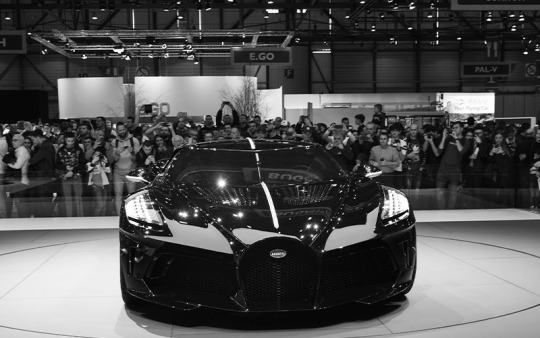
“La Voiture” is one of the most expensive cars in the world is running on the road. It is built on the 110 anniversary of the Bugatti brand that pays tribute to Type 57 Atlantic. It referred to “La Noire” which means The Black Car which comes at the price of €11 million before tax and with tax it comes €16.7 million or $18.9 million which makes it one of the most expensive new cars ever sold.
“La Voiture Noire” powered by a monster like an engine quad-turbo W-16 8.0 liter engine which delivers 1479 horsepower and 1180lb-ft of torque.
Jaguar Vision Gran Turismo Coupe

This car showcase the passion of designers who have passed all the odds and created Jaguar Vision Gran Turismo. The name gives off a vibe of something extraordinary which implies the latest virtual design like a racing video game. Jaguar unveils the Vision Gran Turismo coupe as a first virtual all-electric, all-wheel-drive car that defines the unexceptional future.
The automakers of Jaguar have taken the inspiration from their models C and D type to create the impossible vehicles something low, long and sleek. It comes as the vision of Jaguar’s perfect all-electric future car in which power is channeled with electric motors i.e. one on the front axle, and one driving each rear wheel. Lithium-ion batteries give the Vision Gran Turismo Coupe more than 1,100 horsepower and 885 lb-ft of torque and a zero-to-60-mph time of fewer than 2.0 seconds.
Alfa Romeo 33 Stradale
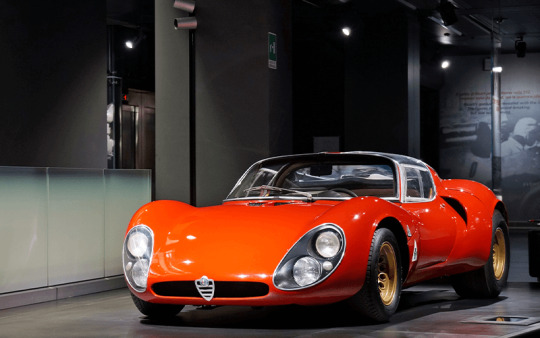
Alfa Romeo comes as the treat to your eyes with its beautiful designs and renowned as the supercar. The 33 Stradale was the first production car with butterfly doors, beltline upwards the doors are all glass and curved into the roof of the vehicle creating a T-Top of sorts.
33 Stradale comes in two-seater gorgeous coupe which has one of the beautiful designs of all the time. Why it is rare? There were only 18 cars produced which also differ from one another as their body are made up of Carrozeria Marazzi which improves the car and their production process. It has 2.0-Liter V8engine which generates 227 Horsepower, 152 Pound-Feet, four ignition coils, and 16 spark plugs it was specially built for this car. top speed of 160 mph and a 0-60 time of 5.5 seconds.
W Motors Lykan Hyper sport
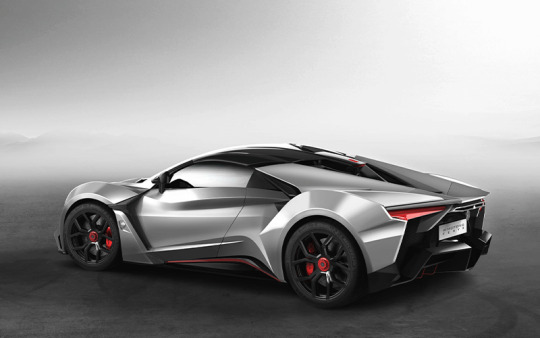
The Lykan Hypersport is undeniably a luxury expensive supercar that has just production of seven units that implies you can have a glimpse once in a blue of this car. To all the fans of Fast and Furious, 7 know the craze of this real car and the defying scene from Furious 7. It is counted as the third most expensive car when sold new it has the heart of the wild hypercar which makes it the fastest car in the world.
Hyper sport has titanium LED headlights with 420 15 carat diamonds holographic display in the center console. It comes with the twin-turbocharged 3.7-liter six-cylinder engine underhood produces 780 horsepower (581 kilowatts) and 708 (960 Newton-meters) of torque.
Ford GT 40
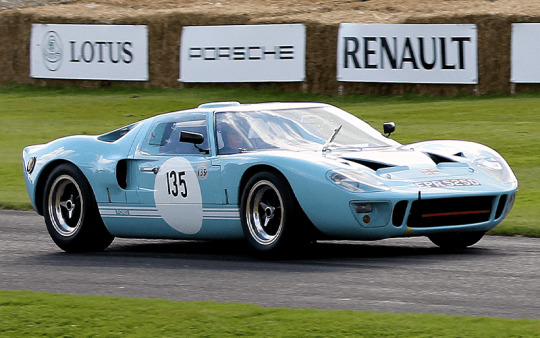
The Ford GT 40 comes as a high-performance race which is a predecessor for prominent Ford GT supercar. These cars are very rare to find these days as it has the prototype of GT40 is based on the British Lola Mk6 and includes a series of American made engines.
GT40 was named after the style Grand Tourer which has the over-all height of 40 inches and 105 cars were produced. It runs on the 4.7-liter engine in the Mk I, a 7.0-liter FE engine in the MK II, a detuned, 306-hp 4.7-liter engine in Mk III, and the same engine in Mk IV as in Mk II.
McLaren F1 LM
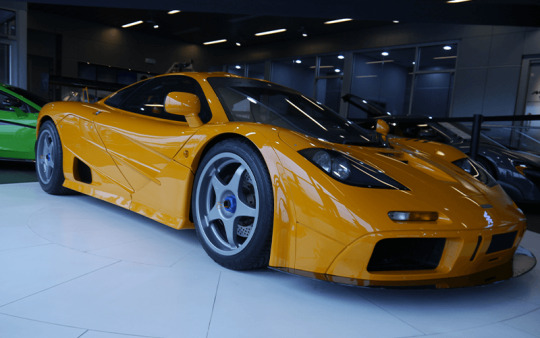
The LM has been upgraded version McLaren F1which was built to celebrate the five McLaren F1 GTR. The company has only built 6 cars in which were five were sold. This rare hypercar uses the platform developed for F1 chassis which can be recognized by their Papaya orange paint jobs that shares the same race color.
McLaren has the same engine which is present in the F1GTR and runs on the engine of 6.1-liter V12 that produces 680hp, tested 0-60 mph in 3.9 seconds 0-100-0 mph in 11.5 seconds and over a distance of 828 feet and a top speed of 225 mph.
Lotus Evija
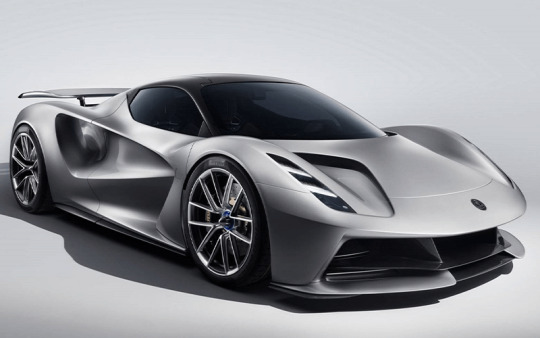
The all-electric Evija comes as the hypercar with its visually exciting and extraordinary fast charging capability which ensures 2000horsepower. Lotus Evija is one of the most powerful products on the road in the world and the company will manufacturer only 130 cars.
It has faced cut-throat competition from Ford GT and Aston Martin Valkyrie which gives off the appearance of LMP race cars. This electrified hypercar features extensive aerodynamic addenda with the inclusion of diffusers with the drag-reduction system. It has an electric motor with 1972 horsepower and a claimed 1254 lb-ft of torque through a single-speed transmission and the battery can be charged to 80 percent in just 12 minutes.
Lamborghini Veneno
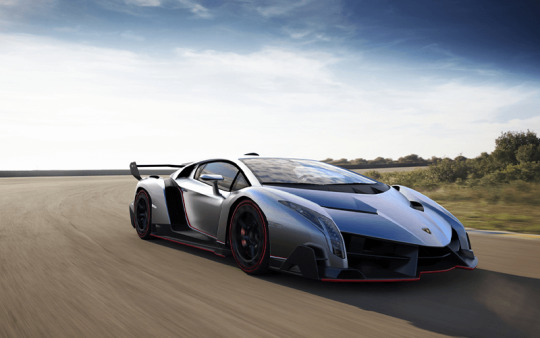
Lamborghini Veneno comes as more stylish and the company has only built just three units. Veneno skin hides the carbon-fiber monocoque, aluminum front, and rear subframes. It has pushrod suspension with horizontal spring damper which is fitted with Pirelli P Zero tires on 20-inch wheels on the front and 22-inch wheels in the rear.
It has some remarkable style that features the car, shows their assembling from separate connected units, bulged muscles and provocative. It has boosted up incredible power L539 6.5-liter V-12 engine, upgraded here to produce 740 horsepower.
Source: https://allcarsonline.com/rarest-cars-in-the-world/
#alfa rome#Lamborghini#Bhugaati#jaguar#cars online#used cars for sale#cars online for sale#used cars online#best luxury cars#best hybrid cars#best crossover cars#best midsize luxury SUV#fastest SUV#fastest SUV in the world
0 notes
Photo

Boost Carbon 29er @stradalli_cycle @stradallicycle #29erboost #boost #fullsuspension #29 #boostbikes #bike #mountainlife #29er #mountainbiking #mountainbike #mtb #mtbracing #red29er #stradalli #stradallicycle #red
#mountainbiking#fullsuspension#mountainlife#stradalli#29er#mountainbike#red29er#boostbikes#stradallicycle#29erboost#29#bike#mtb#boost#red#mtbracing
0 notes
Text
Ferrari SF90 Stradale Spider spied wearing a bag of camouflage
[ad_1]
The Ferrari SF90 Stradale is the most powerful and most tech-forward road car to come out of Maranello ever. It’s a plug-in hybrid that puts out a combined 986 horsepower between the boosted V8 and three electric motors. So, of course it’s getting a convertible variant.
These spy shots are our first look at what is likely the SF90 Spider. It’s not exactly clear that this heavily covered…
View On WordPress
0 notes